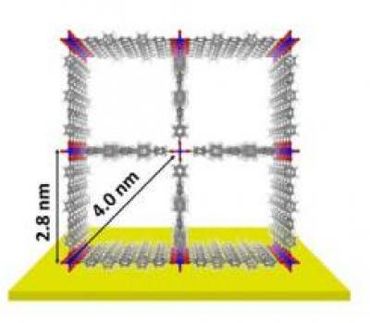Researchers outline structure of largest nonvirus particle ever crystallized
Findings will make it easier to engineer nanoparticle containers for use in targeted drug therapy
Advertisement
Researchers at UCLA's California NanoSystems Institute, the David Geffen School of medicine at UCLA and the Howard Hughes Medical Institute have modeled the structure of the largest cellular particle ever crystallized, suggesting ways to engineer the particles for drug delivery. The research study, which focuses on new engineered nanomaterial vaults for use as a drug-therapy vehicle, appears in PLoS biology.
The team of researchers at UCLA is led by David Eisenberg and Leonard H. Rome of the departments of biological chemistry at the Geffen School of Medicine and the California NanoSystems Institute and associate researchers Daniel H. Anderson, Valerie A. Kickhoefer and Stuart A. Sievers. Eisenberg, Anderson and Sievers are also members of the Howard Hughes Medical Institute and the UCLA-U.S. Department of Energy Institute for Genomics and Proteomics.
Vaults are large, barrel-shaped particles found in the cytoplasm of all mammalian cells; they may function in innate immunity. As naturally occurring nanoscale capsules, vaults may be useful to engineer as therapeutic delivery vehicles. For the study, the team of researchers proposed an atomic structure for the thin outer shell of the vault. Using X-ray diffraction and computer modeling, the research team developed a draft atomic model for the major vault protein, which forms the shell-like enclosure of the vault.
"Our draft model is essentially an atomic-level vault with a completely unique structure, like a barrel with staves. It is unlike any other large structure found in nature," Rome said. "The outside of the vault structure is like an eggshell - a continuous protective barrier with no gaps."
The shell is made up of 96 identical protein chains - each made of 873 amino acid residues - folded into 14 domains. Each chain forms an elongated stave of half the vault, as well as the cap of the barrel-like shell.
"These nanostructured vaults offer a human-friendly nanocontainer, like a molecular-level C-5A transport jet, with a cargo hold large enough to encompass a whole ribosome with its hundreds of proteins and nucleic acids, or enough drugs to control a cell," Eisenberg said.
The construction of the draft atomic model lays the foundation for further studies of vaults and will guide vault engineering projects focused on the targeted release of vault contents for drug delivery.
Topics
Organizations
Other news from the department science

Get the chemical industry in your inbox
By submitting this form you agree that LUMITOS AG will send you the newsletter(s) selected above by email. Your data will not be passed on to third parties. Your data will be stored and processed in accordance with our data protection regulations. LUMITOS may contact you by email for the purpose of advertising or market and opinion surveys. You can revoke your consent at any time without giving reasons to LUMITOS AG, Ernst-Augustin-Str. 2, 12489 Berlin, Germany or by e-mail at revoke@lumitos.com with effect for the future. In addition, each email contains a link to unsubscribe from the corresponding newsletter.




























































